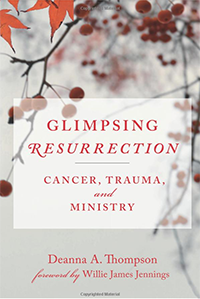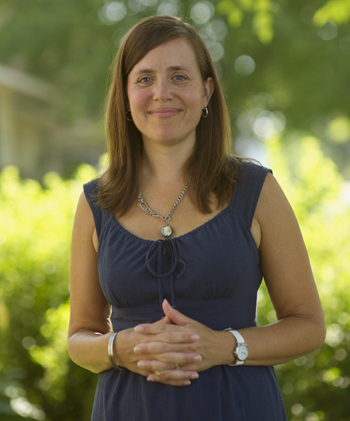Chapter 1: Undone by Cancer
Cancer stories are everywhere. Family members, neighbors, co-workers, friends, and friends of friends have cancer stories. They regularly appear in the media and on bestseller lists. Most of us can recite the all-too-familiar plotline: the mysterious symptoms and multiple medical tests, the devastating diagnosis and aggressive treatments, the disorienting side effects and the hoped-for-but-not-always-realized remission. We root for happy endings to these stories, participate in them when we can with offers of care and support, and draw inspiration from those who confront their illness with courage and grace.
 Cancer stories are everywhere, and we know them well. We know them well not just because they’re everywhere but because we’re drawn to them out of anticipation for what clues they might offer for negotiating our own present and future. Paul Kalanithi, whose best-selling memoir When Breath Becomes Air chronicles his diagnosis and life with stage-IV lung cancer, says this about why he decided to share his own cancer story: “[The reader] can get into these shoes, walk a bit, and say, ‘So that’s what it looks like from here.’ [It’s] not the sensationalism of dying, and not exhortations to gather rosebuds, but: Here’s what lies up ahead on the road.”
Cancer stories are everywhere, and we know them well. We know them well not just because they’re everywhere but because we’re drawn to them out of anticipation for what clues they might offer for negotiating our own present and future. Paul Kalanithi, whose best-selling memoir When Breath Becomes Air chronicles his diagnosis and life with stage-IV lung cancer, says this about why he decided to share his own cancer story: “[The reader] can get into these shoes, walk a bit, and say, ‘So that’s what it looks like from here.’ [It’s] not the sensationalism of dying, and not exhortations to gather rosebuds, but: Here’s what lies up ahead on the road.”
All of us know we’re going to die -- someday. But people who are seriously ill know this acutely. And that perspective nudges us toward compelling cancer stories like Kalanithi’s, scanning the terrain for signposts, road maps, and landmarks that help reassure us that making meaning is still possible “up ahead,” even when the next leg of the journey includes life-threatening illness.
I used to take in these stories from my residence in the land of the well, but my forced relocation into the land of the ill means that cancer stories look and sound different from the way they did before I got sick. Disruptions in the narrative come into focus. These days I find myself gravitating toward the irresolution that echoes between the well-known chapters. Residency in the land of the ill has made me aware that the cancer-story plotline we think we know often gets streamlined, its rough edges smoothed over.
It’s not that cancer stories have completely different plotlines than do stories from the land of the well. As Kalanithi says, it’s the up-ahead sightline that’s distinctive. The acuteness of the vision threatens well-developed structures of meaning making, of nomos. Atul Gawande, author of Being Mortal: Medicine and What Matters in the End, insists that we all know that our bodies will eventually fall apart. Thanks to modern medicine, however, we are living in the midst of a biological revolution regarding expectations of human life. We’re thus experiencing a cultural revolution about how we think about the parameters of our mortality.
So when someone is abruptly exiled to the land of the ill, especially in or before the prime of life, an anxious curiosity threatens to overtake our sense of nomos and the accompanying belief that we’ve got eight or nine decades to live. Especially when illness strikes the young, it compels us to acknowledge that even though so many of us live longer and enjoy healthier lives than those who’ve gone before, cancer is not yet vanquished, and the possibility of being handed our own personal cancer story is a live possibility.
Arthur Frank, whose work as a sociologist includes investigating the stories we tell one another about illness, says that seriously ill people “need to become storytellers in order to recover the voices that illness and its treatment often take away.” People living with cancer tell stories to recover their voices, to better understand their bodies and lives disrupted and rearranged by illness, and to figure out how to continue to live while being persistently susceptible to anomie, that sense of chaos and disorientation that a serious diagnosis can bring. The more the tellers of stories of life with cancer recognize that the particularities of their own stories are being heard, the more possible it is for those who are ill to recognize how they might go on amid lives upended by cancer.
As Frank notes, the stories we tell give form to lives that inherently lack form. But giving form to lives shattered by cancer also has its risks. What happens when cancer stories deviate from the plotline we think they should follow? There’s pressure in the land of the ill to conform to versions of the cancer story that are palatable, relatable, meaningful, and saturated with hope. There’s pressure to downplay the nonsensical, to ignore fissures that redirect the plot. And from the perspective of the land of the well, cancer stories that linger over the anomic plot developments tend to disturb and disorient, leaving the well in a state of uncertainty about how to respond or relate. Danger lurks for both the tellers and the hearers under the influence of streamlined versions of the cancer story.
In order for stories to shape both the tellers and the hearers in life-giving ways, Frank proposes “letting stories breathe,” letting them have the first word rather than relying on the versions we think we know. When we really listen to another’s experience and empathize with it, that act creates more breathing room in the stories we tell one another about living with serious illness, more space to explore how best to be with those who are sick where they live, move, and have their being. If cancer stories help us learn more about how to live, whether we live in the land of the ill or the land of the well, we need to get more practiced at listening carefully to the particularities of different cancer stories. In so doing, we will fine-tune our ability to make more space for the unexpected, irresolute, anomic moments that permeate these stories. When we expand and stretch cancer stories and let them breathe, it becomes more possible to offer the care and support that those in the land of the ill actually need.
Dying at age thirty-seven, less than two years after he was diagnosed with stage-IV lung cancer, Paul Kalanithi did not get to live nearly long enough with his own cancer story. But he left an exquisite testament to his attempt to live fully and sometimes even well with aggressive cancer. A gifted neurosurgical resident at Stanford University, Kalanithi was forced to the sidelines of his practice by invasive, incurable cancer. But with treatment the cancer momentarily receded, and his oncologist recommended that he return to work. Kalanithi reminded her that he was dying. She reminded him that he still had life yet to live.
As a doctor who regularly treated patients with terminal illness, Kalanithi thought that he had developed some sense of what it was like to be seriously ill. “But I’d had no idea how hard it would be,” he admits. “I hadn’t expected the prospect of facing my own mortality to be so disorienting, so dislocating.” Kalanithi struggled to figure out how to continue living when he knew his remaining time would likely be short. He eventually returned to one of the loves of his life -- literature -- in search of language to help orient him to life on the edge of death. Kalanithi writes about yet another day when he awoke in pain, with no prospects in sight other than eating breakfast. “I can’t go on, [he] thought, and immediately, its antiphon responded, completing Samuel Beckett’s seven words,” words he had learned long ago: I’ll go on. “I got out of bed and took a step forward,” he writes, “repeating the phrase over and over: ‘I can’t go on. I’ll go on.’”
The Mantra of those Undone by Cancer
“I can’t go on.” To experience the world as so anomic as to not want to go on is an experience we all fear. And the fear of meaninglessness propels us toward stories of illness that make sense. We seek stories that provide explanations for the diagnosis that affirm a nomos, logical explanations that tell us about treatment -- especially in our first-world context -- that’s likely to be effective; stories that testify to the ways in which illness makes possible the emergence of a crystal-clear vision of what’s most important in life. Adding a religious gloss to these stories, many believe, is supposed to reinforce that much-desired sense of logic and meaning. Christians often map stories of illness onto a narrative arc that moves from vanquishing the evils of illness to embracing the new life that follows, and in so doing, they crowd out the cries of anomie.
But if theologians and religious leaders are going to tell, ritually enact, and live out versions of the Christian story that make space for the cries of “I can’t go on” of those living with serious illness, it is imperative that they listen carefully for those pressure points in stories of illness where “I can’t go on” becomes most insistent. What follows is an exercise in paying close attention to the “I can’t go on” moments in the stories of those living with cancer. I examine four cancer story lines that challenge conventional, nomic understandings of what it means to live with cancer. Each story line emerges from a first-person accounting of an adult living with cancer. On the one hand, authors of these passages represent a limited sampling of the millions of cancer stories that exist all around us. All of them are well-educated North Americans who have access to quality medical care, commonalities that place them in an elite group. At the same time, their stories serve as pathways into larger conversations about the pressure points in cancer stories that threaten, disrupt, or crowd out meaning.
The first story line focuses on the toll cancer takes on bodies and on how one lives in the world as a body-self. The second chronicles the pressure that those who live with cancer feel to tell positive stories about their illness and how such pressure affects their ability to communicate what it’s like to be undone by illness. That cancer diagnoses require renegotiation with the future is the focus of the third story line, and the final section explores how the first three trajectories combine to consistently obstruct attempts to locate nomos when living with serious illness.
While each of the four sections begins with an individual cancer story, additional cancer stories that witness to these particular ways of becoming undone by illness are woven into each section. No two cancer stories are exactly alike, but many of our stories share similar pressure points where -- if we pay close attention -- cries of “I can’t go on” are consistently heard. It is also important to note that these stories are told with little use of secondary literature to interpret or analyze them. Chapter 2 returns to these stories, analyzing and interpreting them using research on illness-related trauma, but the goal in the present chapter is to let these stories breathe so that the occasions for trauma are allowed to rise to the surface.
One last caveat before turning to the “I Can’t Go On” story lines: even as the accent in Kalanithi’s use of Beckett’s phrase is on the experience of becoming undone, that’s not all there is to Beckett’s phrase, or to any of the cancer stories explored in this chapter. Central to Kalanithi’s opting to continue to live is his embrace of the final three words: I’ll go on. How do those undone by serious illness commit to going on, even amid the unlikelihood of recovery? It is also possible, if we pay close attention, to catch glimpses of “I’ll go on” in each of these story lines, even when the anomie continues to disorient and upend. These story lines illustrate well how attempts at restoring nomos are often partial, temporary, and provisional. And still people facing life-threatening challenges choose, against the odds, to go on.
From the book “Glimpsing Resurrection: Cancer, Trauma, and Ministry,” by Deanna Thompson. Copyright (c) 2018 by Deanna Thompson. Reprinted by arrangement with Westminster John Knox Press. All rights reserved.


















